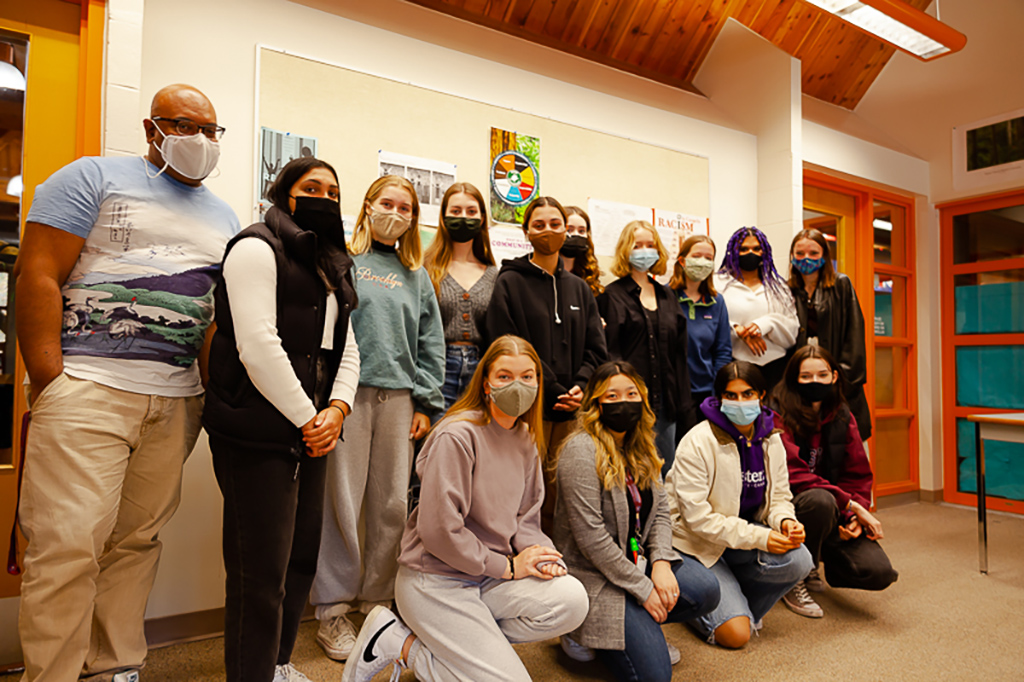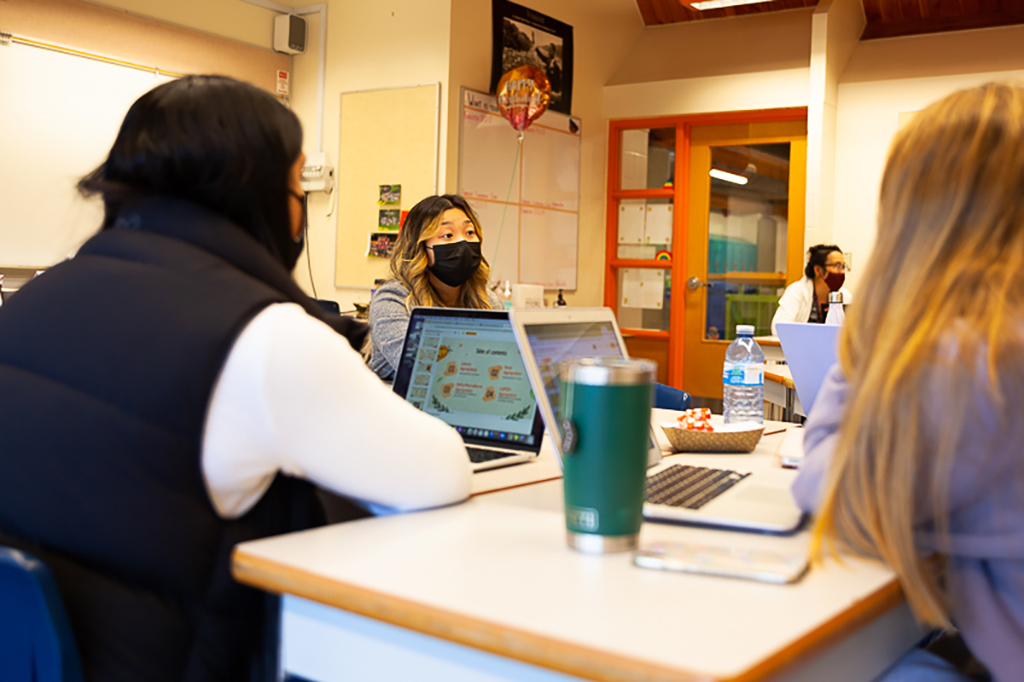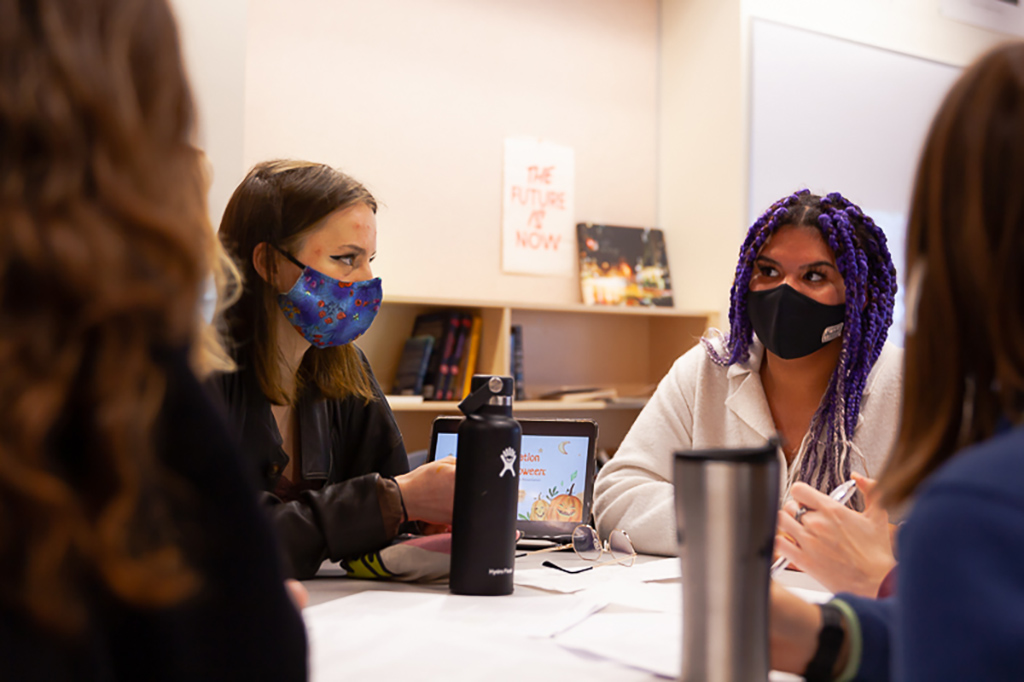Schools are designed to educate and challenge students, to get them out of their comfort zone and try things that may be new, scary or difficult for them.
But schools should also feel safe, and that’s not always the case for Black and Indigenous students with developmental disabilities.
It’s very important to be “creating safe spaces in schools for, really anybody to go and feel comfortable to be themselves and not be afraid to be judged or bullied,” said Jayden Seaman, a Black Grade 11 student at Rockridge Secondary School in West Vancouver.
“And it’s very important for students to be talking about social justice topics going around in the world.”
Carolyn Tinglin, a Black mother of an autistic son who is working towards her education PhD at Simon Fraser University, agrees.
“Unfortunately for many youth, especially Black youth with disabilities, school is a tumultuous, somewhat violent, depressing place,” she said.
For a student with a developmental or neurological disability, trying to fit in with non-disabled peers at school can be emotionally exhausting and anxiety inducing, Tinglin added. Even more so for Black and Indigenous kids who are already marginalized by racism.
“I don’t think people understand how isolating and oppressive it can feel when you’re in this place with people who view you in a specific way, with labels that walk with you and stay with you wherever you go in the school environment,” she said.
With that reality in mind, Tinglin’s non-profit organization, the Youth Alliance for Intersectional Justice, launched a pilot student club of the same name at Rockridge Secondary School in West Vancouver this past September.
While the students are connected by their intersecting identities, the idea of the YAIJ club is to create a space at school where youth feel like they can be themselves, Tinglin added.
“There’s a strong sense of safety, allyship, sharing and respect, and building of friendship in an effort to better understand how to strategize and navigate some of those less equitable, less justice-based spaces within the school system.”
While any student who identifies as an ally in Grades 8 to 12 is welcome to join, the club focuses in particular on supporting Black and Indigenous students with developmental disabilities or who are neurodivergent.
“There’s a need for community-building for these students,” said Kimberley Jung, an English teacher at Rockridge and one of the co-sponsor teachers for the club along with science teacher Aaron Anthony.
“These are the identities that have been the most marginalized or put off or silenced. There aren’t many spaces available or many organizations that work to do this.”
The club, which meets every Monday at lunchtime, is student-led. Other than offering a few prompts for discussion topics, Jung and Anthony let students decide which issues they want to tackle and how.
Topics so far this year have included the National Day for Truth and Reconciliation and whether — and how well — Rockridge Secondary is meeting the 94 Calls to Action from the Truth and Reconciliation Commission.
More recently, students in the club decided to educate their peers on the impacts of appropriating other cultures, ethnicities, sexualities, genders and disabilities in Halloween costumes. Together they created a Google Slides presentation and presented it to several classes in the school.
Seaman, the Grade 11 student and a club member, said the club is important for students like her who have grown up in a mostly white, mostly wealthy community like West Vancouver.
“There’s not a lot of diversity around, especially in the high schools, so having a place where you can go and be yourself is very important. And also a place where you can connect with people and share your personal experience with someone who might understand what that’s like,” she said.
“I’m very interested in helping people and creating safe spaces for people, so when I found out I was like, ‘This is the perfect thing for me.’”

The Youth Alliance for Intersectional Justice student club counts 29 Rockridge students, mainly in Grades 11 and 12, as members.
Jung believes the club has mostly drawn older students because they’ve been waiting for a space like the YAIJ for much longer.
Twyla Frid Lotenberg, a neurodivergent Grade 12 student who is of Mexican, Syrian, Ashkenazi and Sephardic Jewish descent, found out about the club through Jung and became one of four executive club members.
“Rockridge is a very homogenous group of mostly very white, wealthy, straight-presenting people, so it’s alienating for anybody who has subordinate identities or feel like ‘other,’” Frid Lotenberg said.
Not only are Grade 11 and 12s more likely to be members, Frid Lotenberg noticed those were the students who seemed most receptive to the club’s message on Halloween costumes.
“There was a lot of people who would tune out because, ‘Oh, I have 15 minutes of class now that I don’t have to listen to,’” she said. “But there was also a lot of people really engaged. I found the senior grades more engaged than the junior ones.”
Focusing on youth who straddle multiple identities based on their race and neurodivergence makes the school club and the overall non-profit unique in Canada, said Jung.
“Typically, people try to actually separate the two,” she said of race and disability.
But that means people with intersecting identities can’t always recognize themselves in the organizations that are supposed to represent them.
“There’s a lot of programs for those with differing abilities, like Best Buddies and big national programs like that,” Jung said.
“But then it’s a different lens for racialized people who are also marginalized by ability. We were trying to bring that into this classroom.”

Jung met Tinglin when they were both master’s students in the equity studies in education program at Simon Fraser University. Co-sponsor teacher Aaron Anthony is currently enrolled in the same master’s program.
Tinglin registered YAIJ as a non-profit this past June, dedicating it to assisting Black and Indigenous neurodivergent and developmentally disabled youth to further their education, explore entrepreneurship and broaden their experiences with technology.
Rockridge Secondary’s YAIJ club was specifically created with her son and YAIJ co-founder Jantz’s experiences struggling to fit in in high school in mind.
“There were no clubs at school where he felt like he could walk into the room, be among people who kind of understood where he’s coming from, who had patience with him, where he could be himself,” she said.
Jung sits on the YAIJ’s advisory council, along with Jantz and Grade 11 student Seaman. The advisory council currently has two older members and three younger members, though Seaman is the only member under 18.
It’s important, Seaman said, that the advisory council prioritizes younger voices like hers, in part to attract the attention of a younger demographic. “I’m hoping that people would be more likely to listen to what I have to say,” she said.
The YAIJ, Tinglin said, is the only organization dedicated to representing youth with these identities that is “youth-driven.”
“Our council advise us in terms of what projects they’d like to see, what research they’d like to see done, what issues that they are having that need to be brought to the forefront,” she added.
Inspired by the success of the Rockridge club, both Jung and Tinglin hope to be able to found similar student clubs across B.C. within the next five years, as well as in schools in Ontario and Nova Scotia, with an eventual aim of establishing clubs in schools across Canada.
“It’s an opportunity to create a really great community of open-minded people who are there to support and be there for each other,” Jung said. ![]()
Read more: Rights + Justice, Education
















Tyee Commenting Guidelines
Comments that violate guidelines risk being deleted, and violations may result in a temporary or permanent user ban. Maintain the spirit of good conversation to stay in the discussion.
*Please note The Tyee is not a forum for spreading misinformation about COVID-19, denying its existence or minimizing its risk to public health.
Do:
Do not: